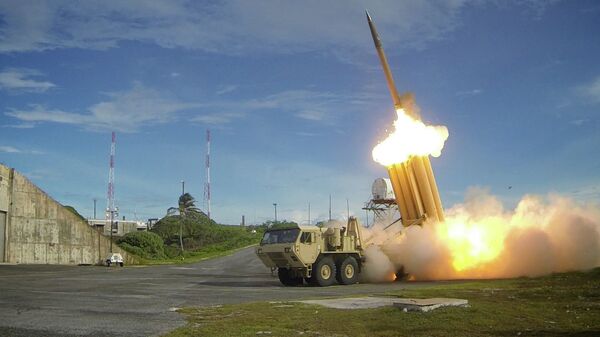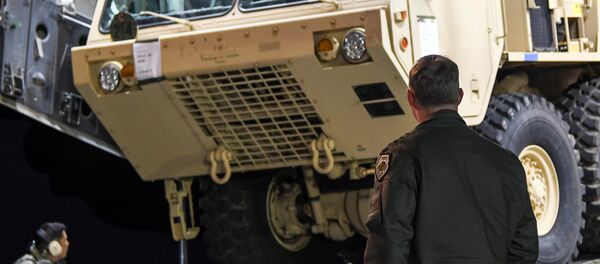The newspaper did not rule out that the possible deployment was caused by "North Korea's continued testing of missiles, fired into nearby waters."
Commenting on the matter, Russian military expert Vasiliy Kashin told Sputnik that "the planned deployment in Japan of three Aegis Ashore systems equipped with more powerful radars will mean that the missile defense problem in Asia finally comes to the fore, leaving the European missile shield-related problem behind."
"Japan is also considering the purchase of the Terminal High Altitude Area Defense (THAAD) system. This will help create a multi-layered missile defense system consisting of Aegis, THAAD and Patriot PAC-3 networks to protect certain particularly valuable locations," according to Kashin.
Japan is seriously considering Aegis Ashore and Tomahawk afloat 🔓 https://t.co/lTodzywX5k pic.twitter.com/xhd9xJus9f
— Aviation Week (@AviationWeek) 23 мая 2017 г.
"Unlike the European missile shield, the Asian one is partly a reaction to the real North Korean threat. At the same time, the [anti-missile systems] significantly increase the capabilities of a US-Japan alliance in the event of war with China," he said.
'Japan would likely need three Aegis Ashore batteries to cover the whole country, each of which would cost around $700 million w/o missiles'
— Doug Pologe (@DougPologe) 23 мая 2017 г.
Kashin added that Beijing "is already taking action to tackle a direct threat emanating from the medium-range ballistic missiles by creating more advanced types of its own medium-range missiles, including those with separating warheads."
"Other areas include large investments in the production of hypersonic weapons and cruise missiles," he said.
He did not exclude that Aegis Ashore as stationary facilities will be vulnerable to a massive strike by cruise missiles and that "the very fact of its existence could provoke such a strike."
Cheaper than THAAD but will it be enough?https://t.co/cdl32hRJxN
— Nikkei Asian Review (@NAR) 22 мая 2017 г.
"At the same time, China's significant production and financial capabilities also make it possible to counter the development of an adversary's anti-missile system by quantitatively increasing the array of ballistic missiles," Kashin said.
He recalled that an air defense system missile always costs several times more than a ballistic missile to be intercepted, which is why investments in the creation of a missile shield only make sense in two cases.
"The first case is when an enemy is extremely weak economically and is not capable of building up its own missile forces. The second case pertains to an owner of the air defense system who is preparing to launch a first strike on the enemy, most likely nuclear," Kashin said.
"Therefore, a country creating a missile defense system against a major state is an unequivocal proof of the country hatching offensive plans and aggressive intentions [with relation to this state]," he concluded.
Tokyo's sudden interest in a missile defense system comes amid all-time high tensions with North Korea following Pyongyang's spate of test missiles that landed in the Sea of Japan.
In 2009, the Japanese Navy equipped several warships with Aegis systems in response to a North Korean promise to launch a satellite attached to a rocket.
In addition to the Aegis systems aboard destroyers, Japan is defended by surface-to-air Patriot Missiles and the Kirameki-2 missile detection satellite, which launched in January 2017.
The Liberal Democratic Party, which controls both houses of the Diet (Japan's Legislature) and is responsible for appointing the Prime Minister, has been pushing for an increase in Japan's missile defense capacity, including the capability to destroy foreign missile bases.
The US Navy uses the Aegis System extensively, including as a part of the NATO Missile Defense System that is being built throughout Europe. Two of the systems, in Poland and Romania, are Aegis Ashore networks.
Never miss a story again — sign up to our Telegram channel and we'll keep you up to speed!






